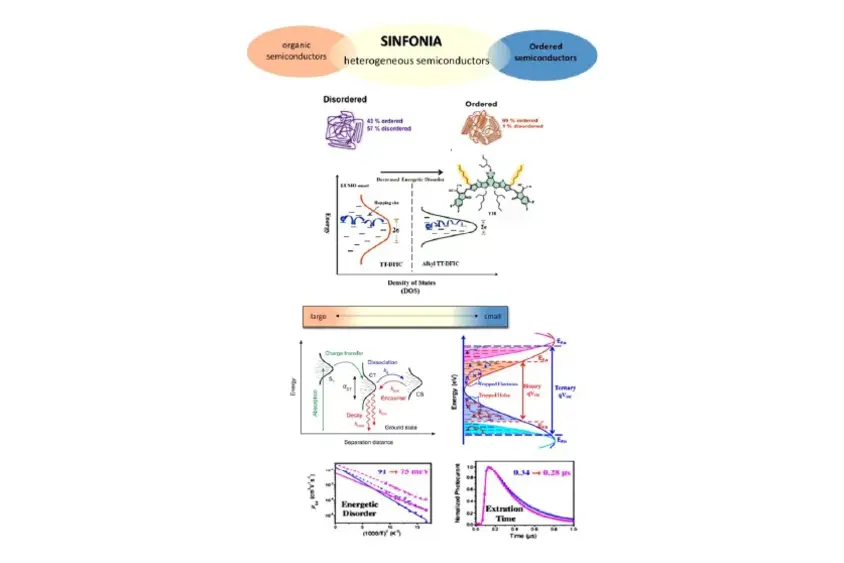Next generation SustaInable semicoNductors For Optoelectronic aNd spIntronic Applications (SINFONIA)
01/01/2024 - 31/12/2028

Bottom: Diagram showing the impact of electron and hole hopping and energetic disorder in OSCs devices. Improving the charge recombination, energetic disorder by reducing energetic disorder.
This research project aspires to make a transformative step away from the established paradigm of few element, simple and single crystalline structures, and towards more complex novel semiconductor materials and hybrid structures. This collaborative project aims at investigating next-generation organic semiconductors for photovoltaics and spintronic applications.
The proposed research takes advantage of the synergistic potential to combine the PI’s skills and expertise in the field of materials with a high degree of disorder and defects, with the wide expertise and established capabilities available at PDI, which has made pioneering contributions at the nexus of inorganic semiconductor thin film and nanowire synthesis by molecular beam epitaxy. The complementarity of the different skills in SINFONIA will make it possible to address specific and cross-disciplinary challenges. The programme contains four main elements:
- Fabrication efforts of organic films: sol-gel based methods to expansion towards molecular beam epitaxy.
- Methodology development to relate structural heterogeneity and film morphology with high spatial resolution to energetic heterogeneity; specifically combined resonance Raman spectroscopy and photo-and electroluminescence experiments that can be applied to organic, inorganic and hybrid semiconductor structures.
- Ensemble characterisation towards predicting device performance: from time resolved and steady state spectroscopy for determining lifetime and nature of excited species to correlation between molecular conformation of the semiconductors and opto-electrical properties.
- Optimizing processing conditions and pioneering scalable device fabrication focusing on organic semiconductor for photovoltaic.